LYNNWOOD, Wash., Feb. 5, 2022 – Lynnwood City Council’s Jan 31 Work Session began with a presentation of the current plans for Community Recovery Center (CRC), which will be built into the new Community Justice Center (CJC). Police Chief James Nelson updated the council on the CRC’s official floor plans, while Rep. Lauren Davis spoke briefly about the project’s budget. The council was joined by Chief Officer Jamie Sellar of Recovery Innovations (RI), who spoke in-depth regarding the CRC’s services and impact.
Recovery Innovations is an international behavioral health agency and a national leader in facility-based crisis services. In his presentation, Sellar estimates how Lynnwood’s CRC will benefit the city based on other facilities RI monitors—specifically three similar crisis centers in Maricopa County, AZ.
Lynnwood Community Recovery Center’s current layout
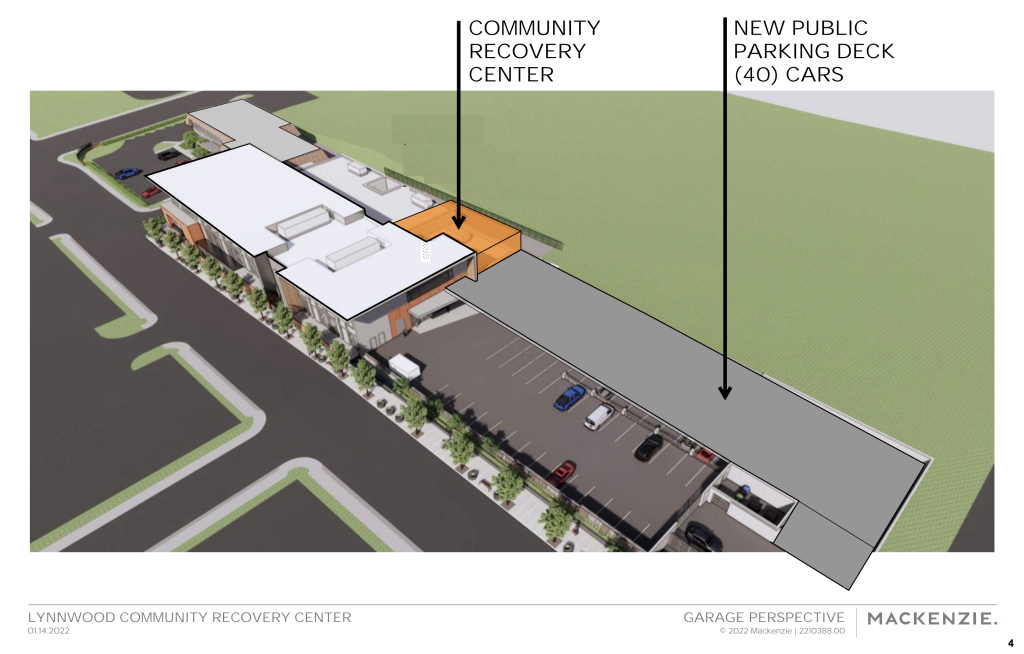
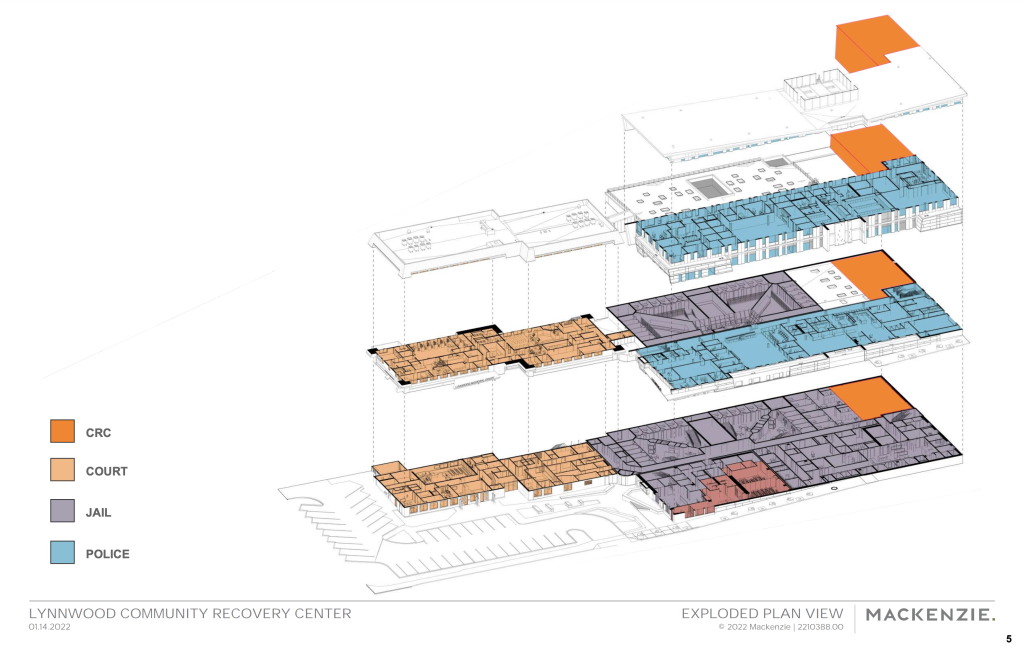
According to Chief Nelson, the first floor of the CRC will be primarily a staff area, including offices and meeting spaces. The floor will be connected to the building’s medical portion, which was redesigned to be located outside of the jail portion. “While it shares walls with the jail, [the medical portion] is no longer located inside the facility,” Nelson explained.
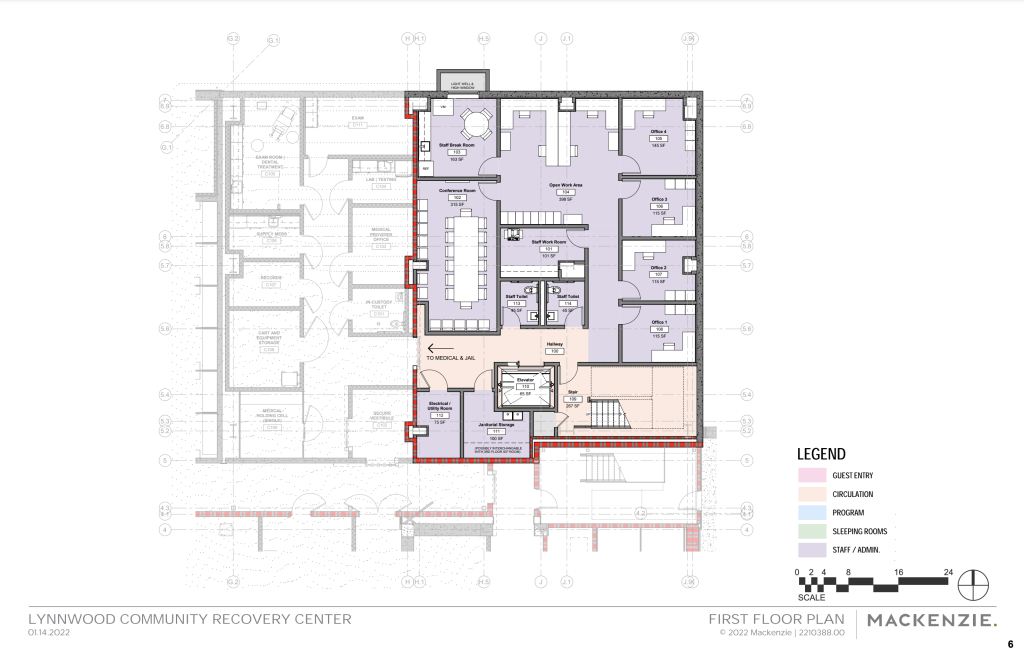
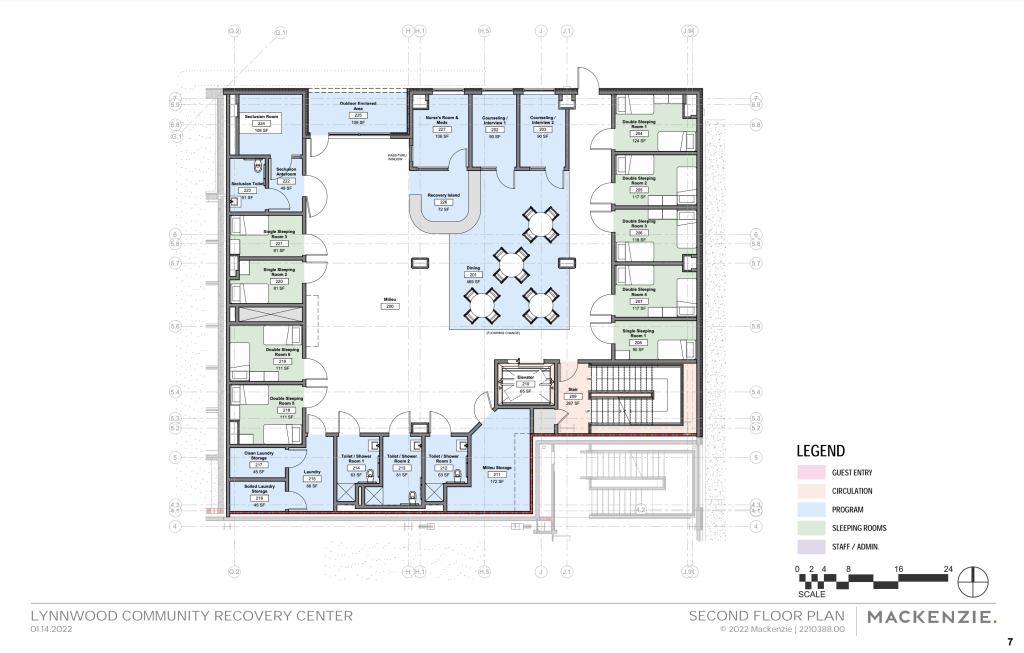
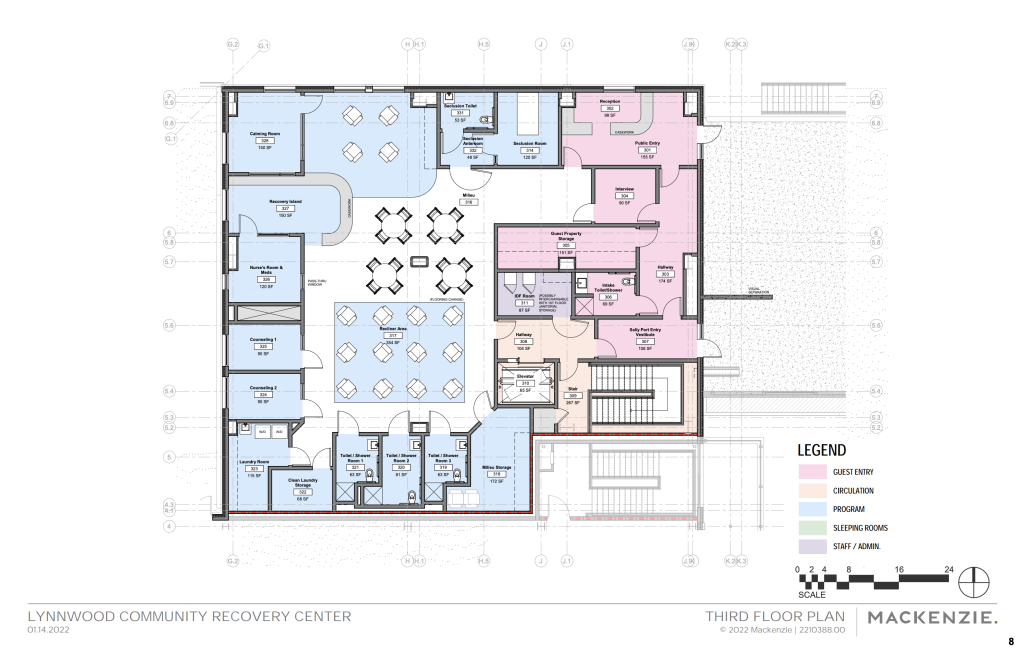
The second floor of the CRC will house short-term stays “for people who are transitioning out of the recovery center or just need some extra time to stabilize,” says Nelson.
This short-term stay area houses 15 beds and a workspace for staff and services.
The third floor’s “Living Room” model
On the third floor, the current design plan features a “living room” space complete with lounge chairs, which will function as the initial patient intake and screening area. As Sellar explained, the living room model helps prevent suicidal thoughts of feeling isolated or unwanted from worsening.
“Instead of having guests separated into rooms waiting for their next intervention, instead of having staff more interested in completing their checklists, and completing their tasks that are on their computers—what you have to do is start creating engagement,” he said.
“So the environment of the living room is going to be welcoming, inviting, and warm. And we’re going to provide a lot of engagement with our peer staff whose only role is to engage and help people process their situations.”
Sellar spoke to the innovation behind the living room model in that it’s the opposite of traditional ER environments. “If I wanted to create an environment that actually increased in a person their perception of being alone, and their perception of being a burden, it would be a traditional inpatient hospitalization,” he said. “It would look exactly what’s going on across the country.”
The “No Wrong Door” model
The third floor will also feature two points of entry, one for the public where the parking lot deck connects to the CRC, and one for police drop-offs located on the same side.
Nelson explains that the entry points were designed after Recovery Innovation’s “no wrong door” model, “which means that anybody showing up, they’re going to intake, and they will also intake people who are involuntarily brought in by law enforcement.”
Sellar later elaborated on this concept, explaining that the “no wrong door approach means you have to be able to accept everybody” and that in order for the facility to be successful, its program must have “a bias for saying yes.”
When talking about the different patient types the facility will likely see, Sellar said, “really, what they all deserve is going to be compassionate care. So everybody gets accepted. Everybody gets assessed. Everybody gets stabilization services. Everybody gets community resources and community linked.”
Lynnwood Community Recovery Center benefits

Both Chief Nelson and Chief Officer Sellar of RI spoke to the many benefits of a CRC. For example, a CRC model will significantly free up officer time compared to how officers currently interact with emergency rooms.
According to Chief Nelson, if an officer encounters someone whom they believe to be either a danger to themselves or others, the officer can bring that person in involuntarily for assessment. This process currently takes place at the city’s emergency room, and as Nelson explained, “that puts a burden on our emergency room services.”
“As we take a person into the emergency room, that’s not the best environment for the officer—to have somebody who is actively in a mental health crisis in an emergency room setting, and it’s certainly not good for the person in crisis,” he said, explaining how emergency rooms are designed to meet physiological needs but not necessarily to manage people who are experiencing a mental health crisis.
“But this facility is exactly that,” he concluded, referring to the CRC.
Nelson further explained that officers are often required to stay in the emergency room for up to two hours, but that with the CRC in Lynnwood, officers will only be needed for about ten minutes and can immediately get a person in crisis into stabilization services.
“It’s a much better outcome for our law enforcement and a much better outcome for the person in crisis,” Nelson concluded.
Chief Officer Sellar later suggested the turnaround time for officers would be even shorter—closer to five minutes. Referring to the average time it takes for officers to admit individuals in crisis to one of the three similar facilities in Maricopa County, AZ, Sellar said, “Last month in Maricopa, the average turn around time was two minutes and fifty-three seconds.”
Sellar also told the council that the CRC in Lynnwood will provide a “third level of care,” meaning a third option besides the ER or jail. “What has been seen in Maricopa County is a decrease in reliance on emergency departments and a decrease in reliance in jail for folks that are in a behavioral health or substance abuse crisis,” he said.
Another noteworthy benefit of the CRC facility, according to Sellar, is that it will save the city money. Using Maricopa County again as an example, Sellar said the county saved about $36 million in unnecessary emergency department visits by “diverting and bypassing emergency departments to begin with” — though he didn’t specify if that amount accrued over a year or since the first facility opened in Maricopa County.
“So not only is it the right thing to do for people who are in crisis to get an adequate level of care that’s crisis focused for them, but it saves money, it saves time, and it allows our emergency departments to do their primary role which is physical health, and it allows our law enforcement criminal justice services to do their primary role which is gonna be public safety,” Sellar concluded.
Budget update from Rep. Davis

Rep. Davis began by expressing her gratitude for the City Council’s efforts to bring such an important resource to the region. Pointing to the borders of legislative districts, Davis explains how the CRC is located at the junction of the 32nd, 21st, 44th, and 1st districts and will consequently be serving residents from each of them.
“The timing for a facility like this in our region could not be more important, and the need could not be more profound,” she said.
“Covid has just had an enormous, devastating negative impact,” Davis continued. “It is not hyperbole to talk about the extent to which this has impacted, not just persons who were already living with behavioral health challenges, but people who actually have no history of psychiatric disorder, substance use disorder, or suicidality who are facing significant and clinical levels of behavioral health distress, in large part brought on by stressors of Covid.”
The project’s $17 million price tag has a remaining balance of $12 million, after factoring in the $3 million awarded from the county and the $2 million Department of Commerce grant Davis predicts will be awarded to the project in March. The remaining $12 will be asked for from the State Capital Budget via a non-competitive, direct appropriation.
Davis further indicated that she expects to receive a much more substantial allocation this year than she initially anticipated. Confident that the project will receive “something in the seven figures this year,” Davis explains this optimism is due in large part to Gov. Jay Inslee prioritizing mental health in his 2022 budget plan.
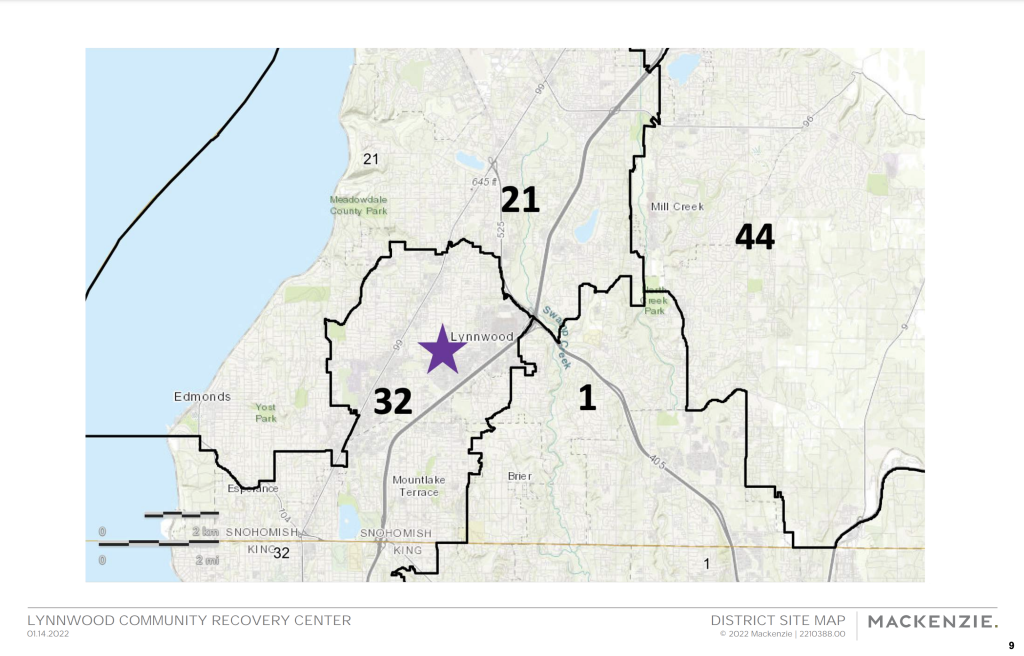
In his proposed Supplemental Budget for 2022, Gov. Inslee allocated $60 million for crisis stabilization facilities. According to Davis, the governor was able to do so thanks to the $6 billion the state still has from Covid federal relief packages. During Monday’s Work Session, Davis expressed her confidence in receiving additional funding for the CRC as it meets the criterion set forth in Gov. Inslee’s budget.
To view the entire Jan 31 Work Session, click here, and to view the session’s agenda, click here.




















One Response